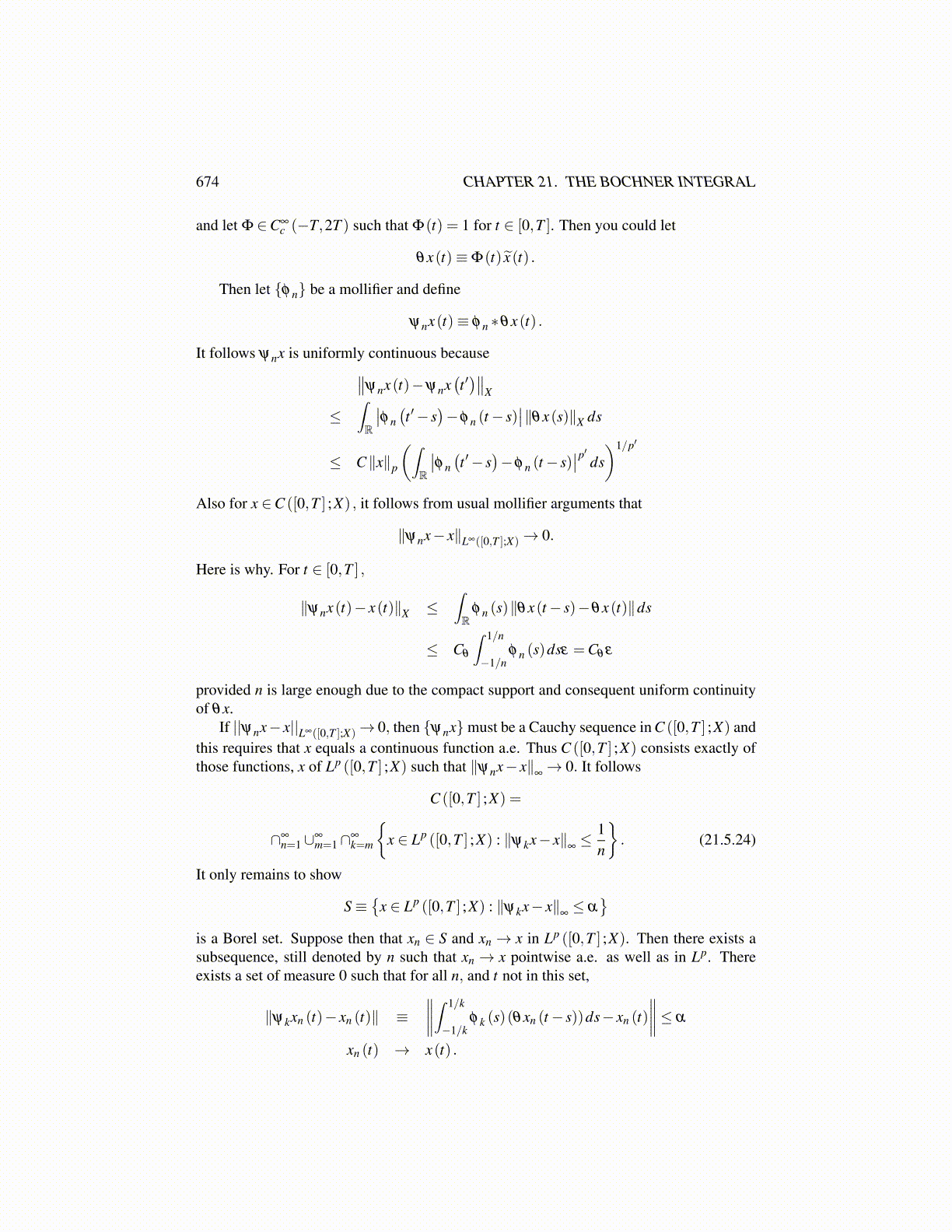
674 CHAPTER 21. THE BOCHNER INTEGRAL
and let Φ ∈C∞c (−T,2T ) such that Φ(t) = 1 for t ∈ [0,T ]. Then you could let
θx(t)≡Φ(t) x̃(t) .
Then let {φ n} be a mollifier and define
ψnx(t)≡ φ n ∗θx(t) .
It follows ψnx is uniformly continuous because∥∥ψnx(t)−ψnx(t ′)∥∥
X
≤∫R
∣∣φ n(t ′− s
)−φ n (t− s)
∣∣∥θx(s)∥X ds
≤ C∥x∥p
(∫R
∣∣φ n(t ′− s
)−φ n (t− s)
∣∣p′ ds)1/p′
Also for x ∈C ([0,T ] ;X) , it follows from usual mollifier arguments that
∥ψnx− x∥L∞([0,T ];X)→ 0.
Here is why. For t ∈ [0,T ] ,
∥ψnx(t)− x(t)∥X ≤∫R
φ n (s)∥θx(t− s)−θx(t)∥ds
≤ Cθ
∫ 1/n
−1/nφ n (s)dsε =Cθ ε
provided n is large enough due to the compact support and consequent uniform continuityof θx.
If ||ψnx− x||L∞([0,T ];X)→ 0, then {ψnx}must be a Cauchy sequence in C ([0,T ] ;X) andthis requires that x equals a continuous function a.e. Thus C ([0,T ] ;X) consists exactly ofthose functions, x of Lp ([0,T ] ;X) such that ∥ψnx− x∥
∞→ 0. It follows
C ([0,T ] ;X) =
∩∞n=1∪∞
m=1∩∞k=m
{x ∈ Lp ([0,T ] ;X) : ∥ψkx− x∥
∞≤ 1
n
}. (21.5.24)
It only remains to show
S≡{
x ∈ Lp ([0,T ] ;X) : ∥ψkx− x∥∞≤ α
}is a Borel set. Suppose then that xn ∈ S and xn → x in Lp ([0,T ] ;X). Then there exists asubsequence, still denoted by n such that xn → x pointwise a.e. as well as in Lp. Thereexists a set of measure 0 such that for all n, and t not in this set,
∥ψkxn (t)− xn (t)∥ ≡∥∥∥∥∫ 1/k
−1/kφ k (s)(θxn (t− s))ds− xn (t)
∥∥∥∥≤ α
xn (t) → x(t) .